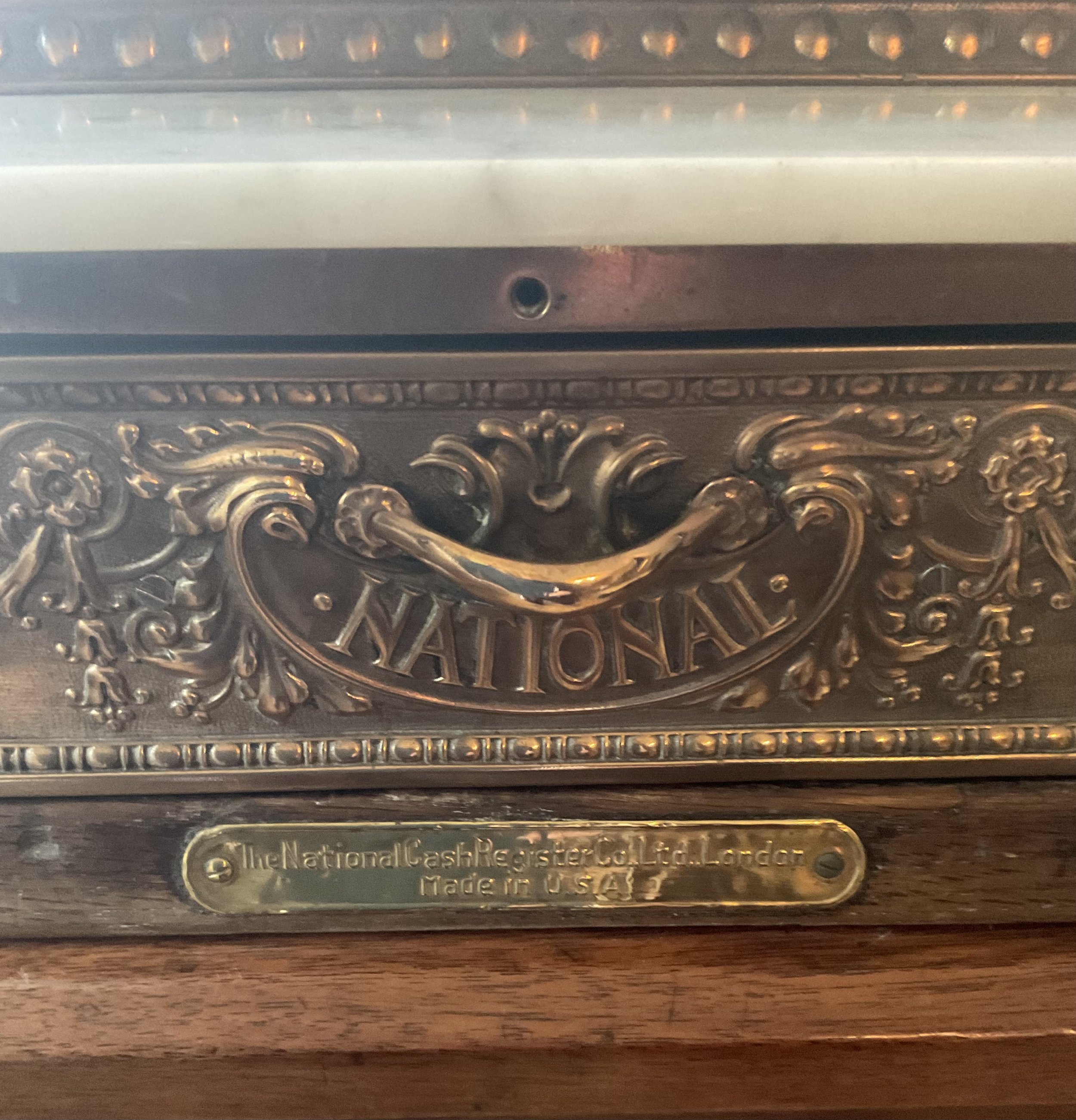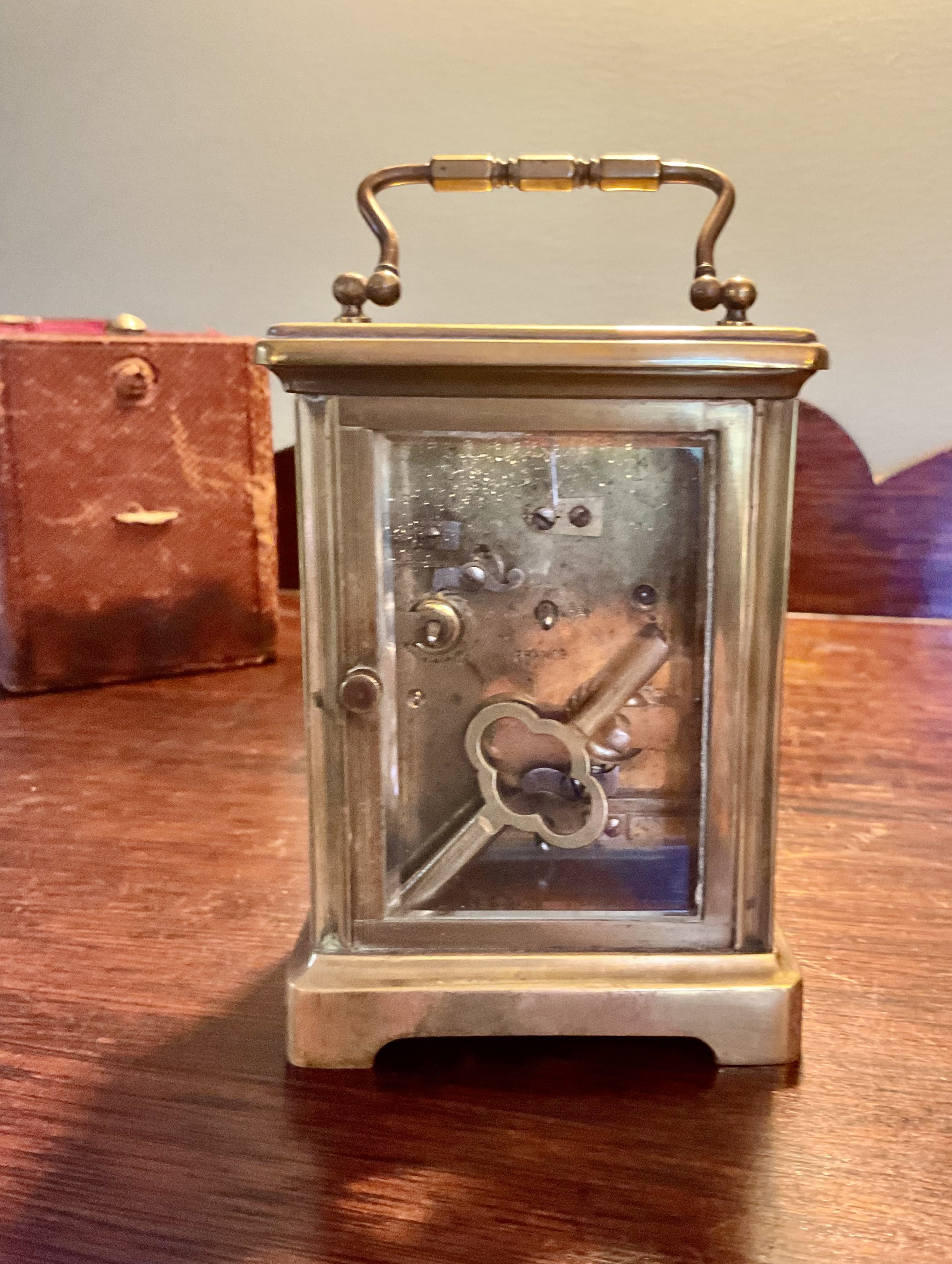Vintage French Sel Box
This old sel (salt) box features autumn tonings with the word ‘sel’ stenciled on the front. There are signs of age related wear and tear. On the bottom left inside there is a hole. This sel box hold holds the character of a long life.
French enamelware was painted functional steel or tin. Enamelware was mass produced in the late 1800s. It was produced throughout Europe, in Austria, Germany, Belgium and Czechoslovakia. Made by the fusion of powdered glass to steel using a firing process, it was tolerant to hot and cold. Once fired, the powdered glass melted and hardened to a smooth coating. Several coats of enamel were applied to produce a thick, glossy finish. Skilled metal workers made the wares. The pieces were fired and hand painted decoration was applied before the final firing, where the artwork became baked on. The decoration and graphic designs of many wares were painted by credible artists. This was considered a serious art form at the time. By the late 1930s, all details of the manufacturing process were done by machine. This included the stencilling artwork. Enamelware became highly popular in France. Wares such as pots, pans, sets of canisters, utensil racks, coffee pots, tea pots, kettles, sugar bowls, milk jugs, soap holders, scrubbing dishes, pitchers and bowls and much more were produced as enamelware. Another common enamelware item was the lavabo (a basin with a water tank). This was placed outside the back door. It was used for hand washing before coming inside after working in the garden or fields. Enamelware took pride of place in ordinary homes.
The sel box measures approximately 17 cms in length, 29 cms in height and 11 cms in width.
This old sel (salt) box features autumn tonings with the word ‘sel’ stenciled on the front. There are signs of age related wear and tear. On the bottom left inside there is a hole. This sel box hold holds the character of a long life.
French enamelware was painted functional steel or tin. Enamelware was mass produced in the late 1800s. It was produced throughout Europe, in Austria, Germany, Belgium and Czechoslovakia. Made by the fusion of powdered glass to steel using a firing process, it was tolerant to hot and cold. Once fired, the powdered glass melted and hardened to a smooth coating. Several coats of enamel were applied to produce a thick, glossy finish. Skilled metal workers made the wares. The pieces were fired and hand painted decoration was applied before the final firing, where the artwork became baked on. The decoration and graphic designs of many wares were painted by credible artists. This was considered a serious art form at the time. By the late 1930s, all details of the manufacturing process were done by machine. This included the stencilling artwork. Enamelware became highly popular in France. Wares such as pots, pans, sets of canisters, utensil racks, coffee pots, tea pots, kettles, sugar bowls, milk jugs, soap holders, scrubbing dishes, pitchers and bowls and much more were produced as enamelware. Another common enamelware item was the lavabo (a basin with a water tank). This was placed outside the back door. It was used for hand washing before coming inside after working in the garden or fields. Enamelware took pride of place in ordinary homes.
The sel box measures approximately 17 cms in length, 29 cms in height and 11 cms in width.
This old sel (salt) box features autumn tonings with the word ‘sel’ stenciled on the front. There are signs of age related wear and tear. On the bottom left inside there is a hole. This sel box hold holds the character of a long life.
French enamelware was painted functional steel or tin. Enamelware was mass produced in the late 1800s. It was produced throughout Europe, in Austria, Germany, Belgium and Czechoslovakia. Made by the fusion of powdered glass to steel using a firing process, it was tolerant to hot and cold. Once fired, the powdered glass melted and hardened to a smooth coating. Several coats of enamel were applied to produce a thick, glossy finish. Skilled metal workers made the wares. The pieces were fired and hand painted decoration was applied before the final firing, where the artwork became baked on. The decoration and graphic designs of many wares were painted by credible artists. This was considered a serious art form at the time. By the late 1930s, all details of the manufacturing process were done by machine. This included the stencilling artwork. Enamelware became highly popular in France. Wares such as pots, pans, sets of canisters, utensil racks, coffee pots, tea pots, kettles, sugar bowls, milk jugs, soap holders, scrubbing dishes, pitchers and bowls and much more were produced as enamelware. Another common enamelware item was the lavabo (a basin with a water tank). This was placed outside the back door. It was used for hand washing before coming inside after working in the garden or fields. Enamelware took pride of place in ordinary homes.
The sel box measures approximately 17 cms in length, 29 cms in height and 11 cms in width.














































